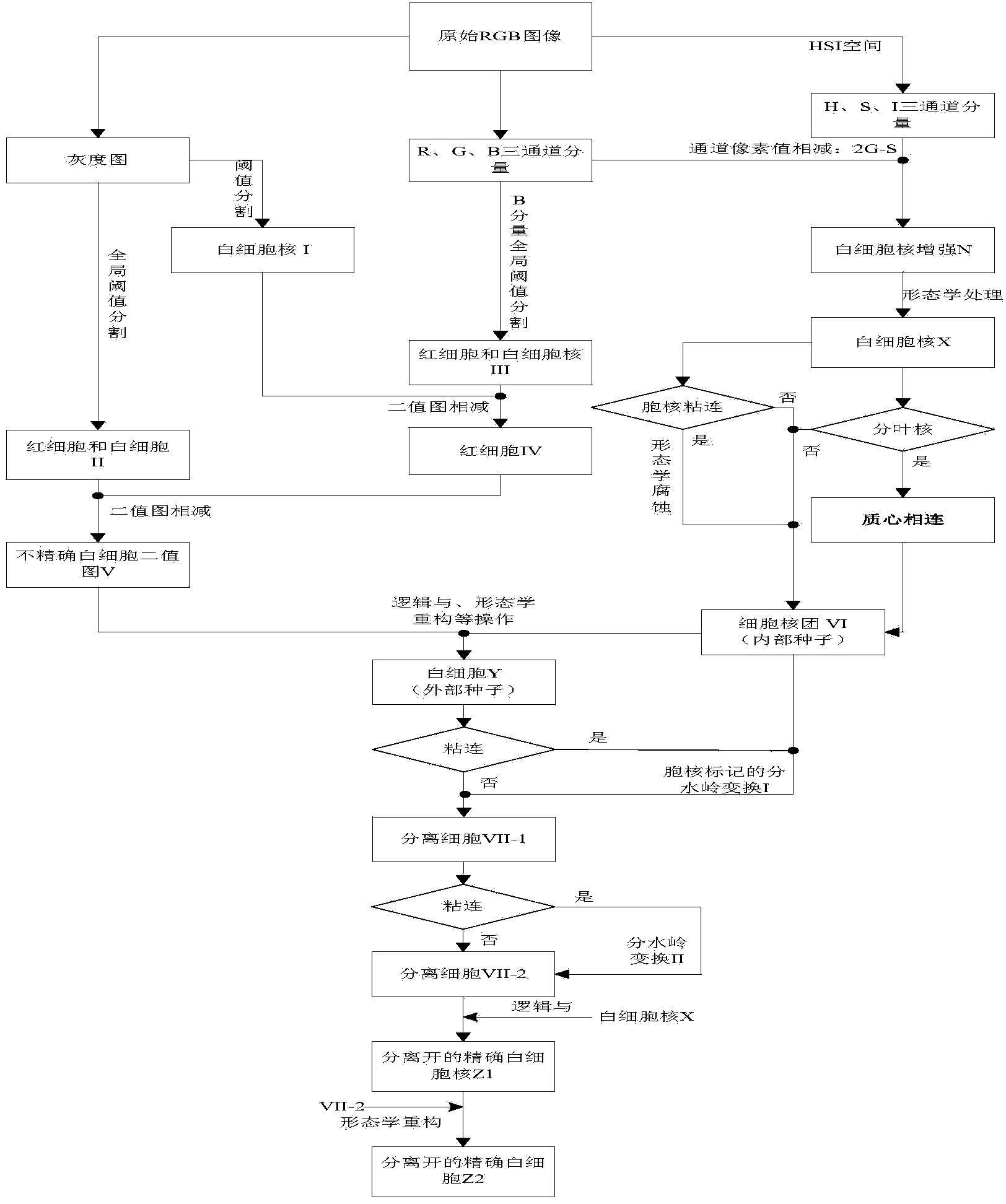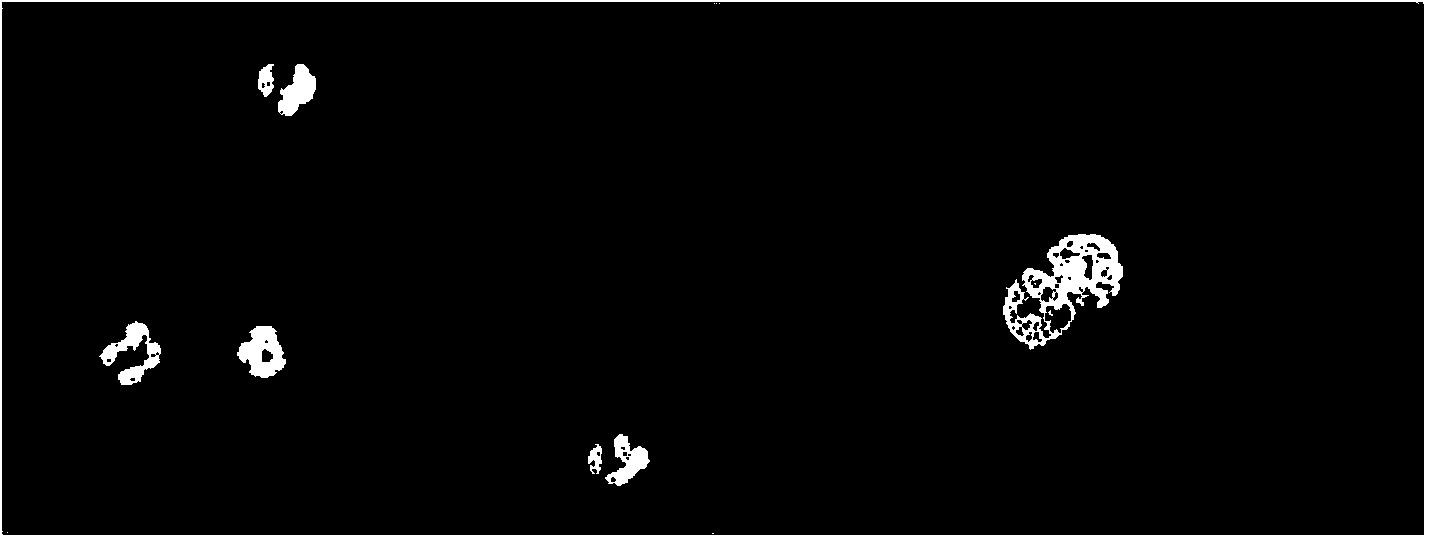Adherent white blood cell segmentation method based on nucleus-marked watershed transformation
A watershed transformation and leukocyte technology, applied in the field of biomedical engineering, can solve problems such as the segmentation of peripheral blood adherent leukocytes, and achieve the effects of ensuring integrity, shortening time-consuming, and reducing the mis-segmentation rate.
- Summary
- Abstract
- Description
- Claims
- Application Information
AI Technical Summary
Problems solved by technology
Method used
Image
Examples
Embodiment 1
[0058] Such as figure 1 As shown, the specific implementation process of a peripheral blood adhesion leukocyte image segmentation algorithm based on nuclear markers involved in the present invention is as follows:
[0059] In white blood cell identification, medical experts usually distinguish between white blood cells and red blood cells based on characteristics such as color and shape, and distinguish white blood cell types based on information such as texture and space. In this paper, multiple peripheral blood cells were collected to form a cell bank, and white blood cells were segmented from the perspective of color and space. The characteristics of some color channels in the cell bank image were analyzed, and it was found that white blood cells could be accurately segmented through color space and morphological operations. For the adhesion problem in leukocytes, the improved watershed transformation based on nuclear markers can be used to accurately and stably segment le...
PUM
 Login to View More
Login to View More Abstract
Description
Claims
Application Information
 Login to View More
Login to View More - R&D
- Intellectual Property
- Life Sciences
- Materials
- Tech Scout
- Unparalleled Data Quality
- Higher Quality Content
- 60% Fewer Hallucinations
Browse by: Latest US Patents, China's latest patents, Technical Efficacy Thesaurus, Application Domain, Technology Topic, Popular Technical Reports.
© 2025 PatSnap. All rights reserved.Legal|Privacy policy|Modern Slavery Act Transparency Statement|Sitemap|About US| Contact US: help@patsnap.com



